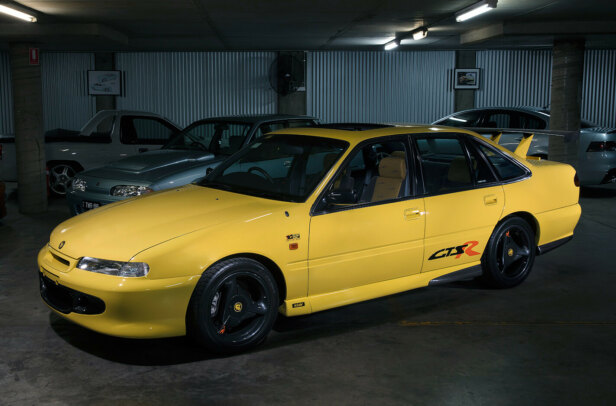The latest cryptocurrency related buzzword making millionaires out of thin air are non-fungible tokens (NFTs). These digital magic beans may be the future of classic car collecting and memorabilia, so it’s worth wrapping your head around them while they’re still new to take advantage of NFT related opportunities as they pop up.
A simple way to think of NFTs are as certificates of authenticity for anything digital. The transaction of an NFT is recorded on something called a blockchain. The blockchain is a big list of transactions that everyone can see and provides a chain of ownership that’s indisputable. There are many different blockchains around but most NFTs use the Ethereum blockchain. The NFTs themselves are traded for cryptocurrency, also typically Ethereum (aka ETH), that you buy with “real” money like Australian dollars. The NFT and cryptocurrency are stored in digital wallets that are usually smartphone apps or a website you log-in to, like Metamask or Coinbase.
There are marketplaces, similar to eBay or Amazon, but specifically for NFTs. SuperRare, OpenSea and Nifty Gateway are popular ones. You can visit a marketplace on the web to view and trade a plethora of digital artworks, music, video game items and even domain names that range in price from a few cents to millions of dollars. The marketplace can also show information about the item from the blockchain, such as who purchased it (which could be an anonymous string of letters and numbers), how much they paid for it and when the transaction took place. You can use an NFT marketplace to flip NFTs you’ve previously purchased too.
The key thing to keep in mind with NFTs is that you are not necessarily purchasing ownership of digital asset (e.g: the audio, the artwork), or the rights to use that digital asset however you wish. Unless specifically outlined in any sale description, when you buy the NFT, the NFT and a copy of the digital asset is typically all you get. Buying the NFT of a digital artwork for example doesn’t mean you can go around selling prints of it legally, unless the creator of that artwork includes the copyright, or a licence to use the work for that purpose. The NFT is simply proof you own a specific digital asset on the blockchain, any other rights beyond that are negotiable.
There’s also nothing stopping someone making a copy of a digital asset attached to an NFT. If the NFT relates to an audio file for example and that audio file is stored on the blockchain, anyone can view the transaction and download a bit-perfect copy of that audio file. They may not be able to legally rebroadcast or resell the audio file as they don’t own the copyright to it, and can’t claim to have “the original” because they don’t have the NFT associated with the audio file, but they still have the audio nonetheless.
Sometimes the digital asset of an NFT is kept off the blockchain (typically due to the size of the digital asset), so a link to a website where the asset is stored is used instead. That link may not even contain the asset, but a simple website explaining what the NFT represents, or a lower quality version for the public to see so the owner enjoys the “original”.
After all this, you may be wondering why anyone would bother to buy an NFT. You don’t get anything physical to own, there’s no inherent ownership rights and as all items are digital and easily copied, what you get isn’t even unique!
Michael “Gup” Gilbert, founder of Powercruise car shows and commercially involved in Blockstar Technologies, is one of the few people with experience regarding car related NFTs, having recently purchased an NFT of a Phase III GTHO Ford Falcon for $51,000.
A big reason for Gup’s high purchase price of the NFT were the perks that come with it. “I do a fair bit of business with Lloyd’s Auctions, so the offer of free buyer’s premium and free commission on anything I buy or sell through Lloyd’s was attractive to me”. Gup was also keen on the potential resale value of the Phase III NFT, “I get 10% of every resale of the NFT forever, and forever is a long time”.
Gup’s digital Phase III also includes licencing rights to the 8TB 3D model of the classic car, but even he admits future licencing opportunities could be slim. “What are they gonna do with it? Who knows?”. As for his own plans for the NFT, “I don’t know what I’m going to do with it. I don’t even understand where the the art portion of this purchase may take me. Maybe I’ll keep it forever, maybe I won’t”.
It’s not hard to imagine car brands jumping on this opportunity to cash in on their legacies using NFTs in the near future. Ferrari making a set of NFT trading cards for all their current and past vehicles giving Ferrari a 10 per cent cut on each time they’re traded. BMW immortalising the sound of their legendary engines as they’re displaced by electric motors, by selling audio samples of their best powerplants. Maybe even Toyota selling a one of a kind Supra you can own and drive in a future version of Gran Turismo. One thing is for sure, the hype around NFTs isn’t going away any time soon.




Comments